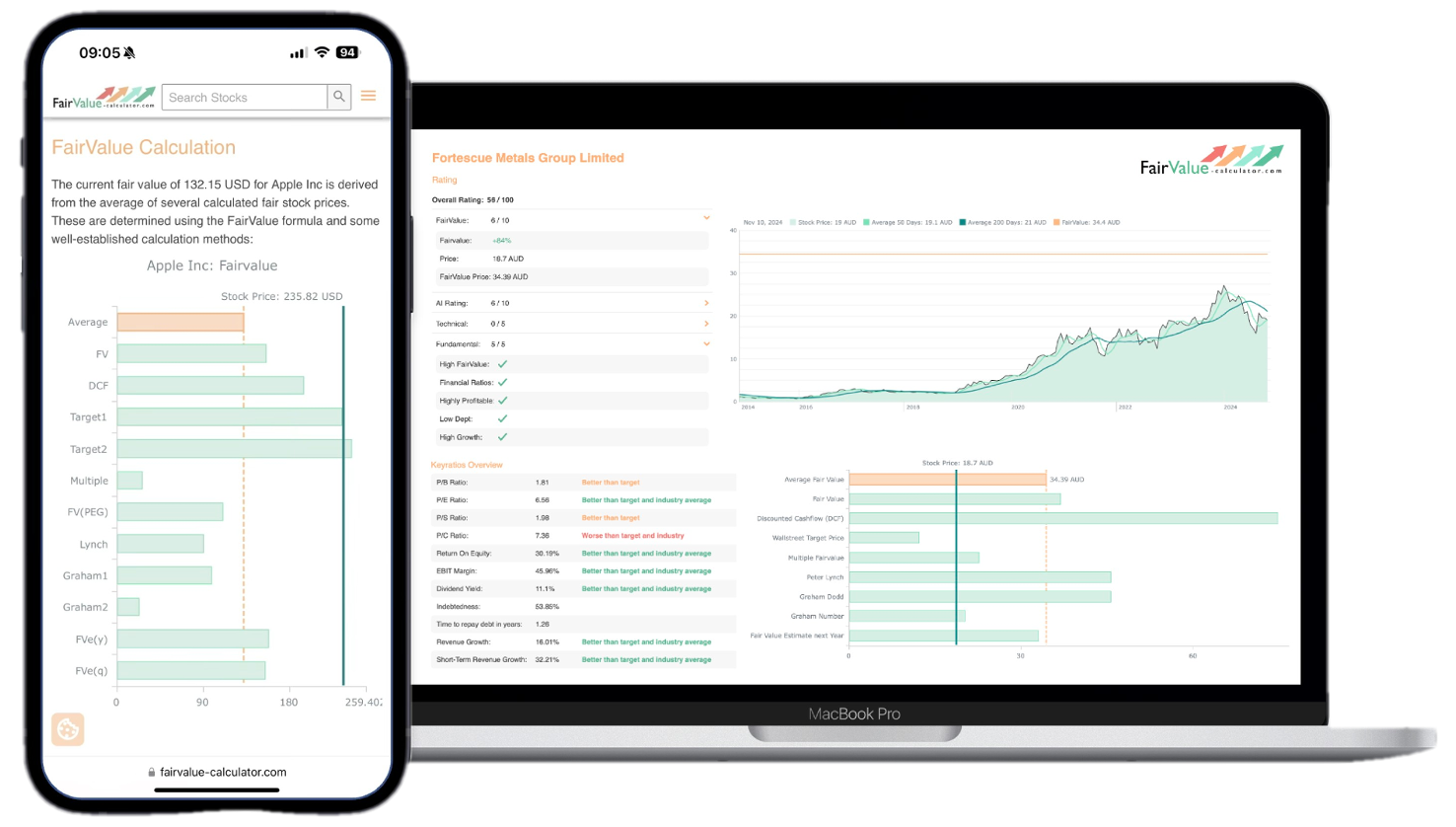In the complex world of real estate investing, understanding fair value is crucial for making informed decisions. Fair value assessment provides a foundation for evaluating properties, identifying opportunities, and managing investment risks. This article explores how fair value calculations can guide real estate investors in assessing property value and navigating market trends.
💡 Discover Powerful Investing Tools
Stop guessing – start investing with confidence. Our Fair Value Stock Calculators help you uncover hidden value in stocks using time-tested methods like Discounted Cash Flow (DCF), Benjamin Graham’s valuation principles, Peter Lynch’s PEG ratio, and our own AI-powered Super Fair Value formula. Designed for clarity, speed, and precision, these tools turn complex valuation models into simple, actionable insights – even for beginners.
Learn More About the Tools →🚀 Test the Fair Value Calculator Now!
Find out in seconds whether your stock is truly undervalued or overpriced – based on fundamentals and future growth.
Try it for Free →Understanding Fair Value in Real Estate
Fair value represents the estimated price at which a property would change hands between a willing buyer and seller, with both parties having reasonable knowledge of relevant facts and neither being pressured to act. Unlike the market value, which reflects the current selling price in the marketplace, fair value incorporates broader considerations including:
Explore our most popular stock fair value calculators to find opportunities where the market price is lower than the true value.
- Peter Lynch Fair Value – Combines growth with valuation using the PEG ratio. A favorite among growth investors.
- Buffett Intrinsic Value Calculator – Based on Warren Buffett’s long-term DCF approach to determine business value.
- Buffett Fair Value Model – Simplified version of his logic with margin of safety baked in.
- Graham & Dodd Fair Value – Uses conservative earnings-based valuation from classic value investing theory.
- Intrinsic vs. Extrinsic Value – Learn the core difference between what a company’s really worth and what others pay.
- Intrinsic Value Calculator – A general tool to estimate the true value of a stock, based on earnings potential.
- Fama-French Model – For advanced users: Quantifies expected return using size, value and market risk.
- Discount Rate Calculator – Helps estimate the proper rate to use in any DCF-based valuation model.
- Long-term value prospects
- Income-generating potential
- Replacement costs
- Comparative market analysis
- Economic Indicators Affecting Property Values
How Fair Value Calculations Guide Investment Decisions
Property Acquisition Strategy
Calculating fair value helps investors determine whether a property is undervalued, fairly priced, or overvalued. This analysis provides leverage during negotiations and helps avoid overpaying in competitive markets. By comparing a property’s asking price to its calculated fair value, investors can:
- Identify undervalued properties with appreciation potential
- Avoid investments likely to underperform
- Set realistic offer prices based on objective valuation
- Allocate capital efficiently across multiple investment opportunities
Portfolio Management
For investors managing multiple properties, fair value assessment enables effective portfolio management through:
- Regular revaluation of holdings to track performance
- Identification of properties that may benefit from renovation or repositioning
- Strategic decisions about when to hold or divest properties
- Risk assessment across the portfolio
Market Trend Analysis
Fair value calculations, when performed consistently over time, reveal important market trends:
- Price movements in specific neighborhoods or property categories
- Changing relationships between rental income and property values
- Shifts in buyer/seller dynamics
- Early warning signs of market corrections or opportunities
Key Components of Fair Value Calculation
Income Approach
For income-producing properties, the income approach calculates fair value based on the property’s net operating income (NOI) and the appropriate capitalization rate:
Fair Value = Net Operating Income ÷ Capitalization Rate
This calculation helps investors assess whether a property’s income potential justifies its price, particularly for commercial properties, apartment buildings, and rental homes.
Comparative Market Analysis
Fair value assessment incorporates analysis of comparable properties (comps) that have recently sold in the same market. Adjustments for differences in features, conditions, and location help refine the valuation.
Replacement Cost Method
This approach calculates what it would cost to rebuild the property from scratch, considering:
- Current construction costs
- Land value
- Depreciation of existing structures
- Building code requirements
Fair Value vs. Market Fluctuations
One of the most valuable aspects of fair value analysis is its ability to provide perspective during market volatility. When market prices deviate significantly from fair value calculations, investors can:
- Recognize potential bubbles before they burst
- Identify buying opportunities during market downturns
- Maintain discipline when emotional factors drive market behavior
- Make counter-cyclical investments based on long-term value
Incorporating Fair Value in Your Investment Strategy
To effectively use fair value in your investment approach:
- Develop a consistent methodology for calculating fair value
- Update calculations regularly as market conditions change
- Consider multiple valuation approaches for each property
- Account for location-specific factors that affect value
- Use fair value as one component of a comprehensive analysis
Final Words
Fair value calculation is more than a theoretical exercise—it’s a practical tool that helps real estate investors make sound decisions in a complex market. By understanding how to properly assess fair value, investors can identify opportunities, manage risks, and optimize returns across their real estate portfolios.
Whether you’re a seasoned real estate investor or just beginning your journey, incorporating fair value analysis into your decision-making process provides a valuable perspective that goes beyond current market prices to identify true investment value.







